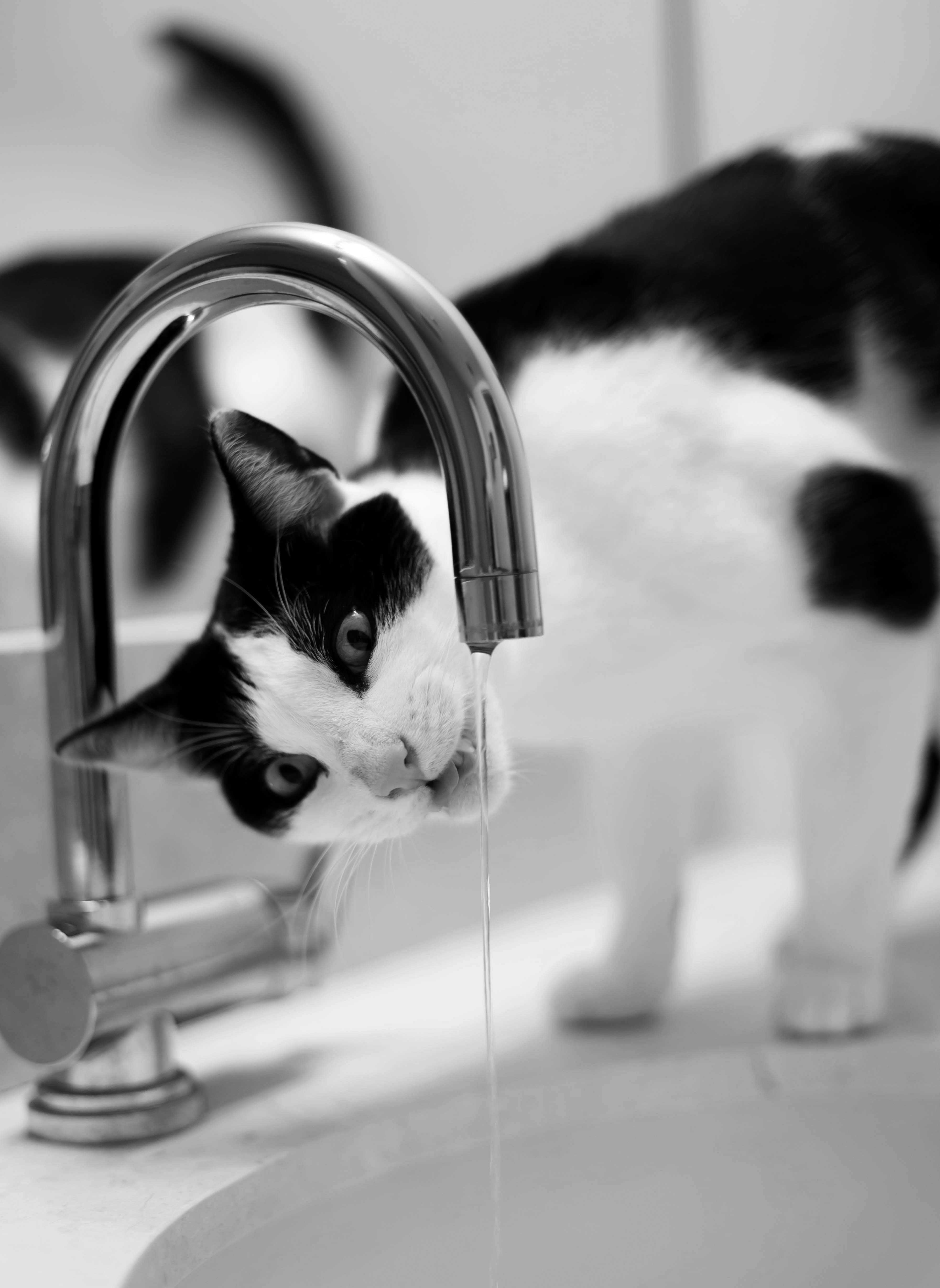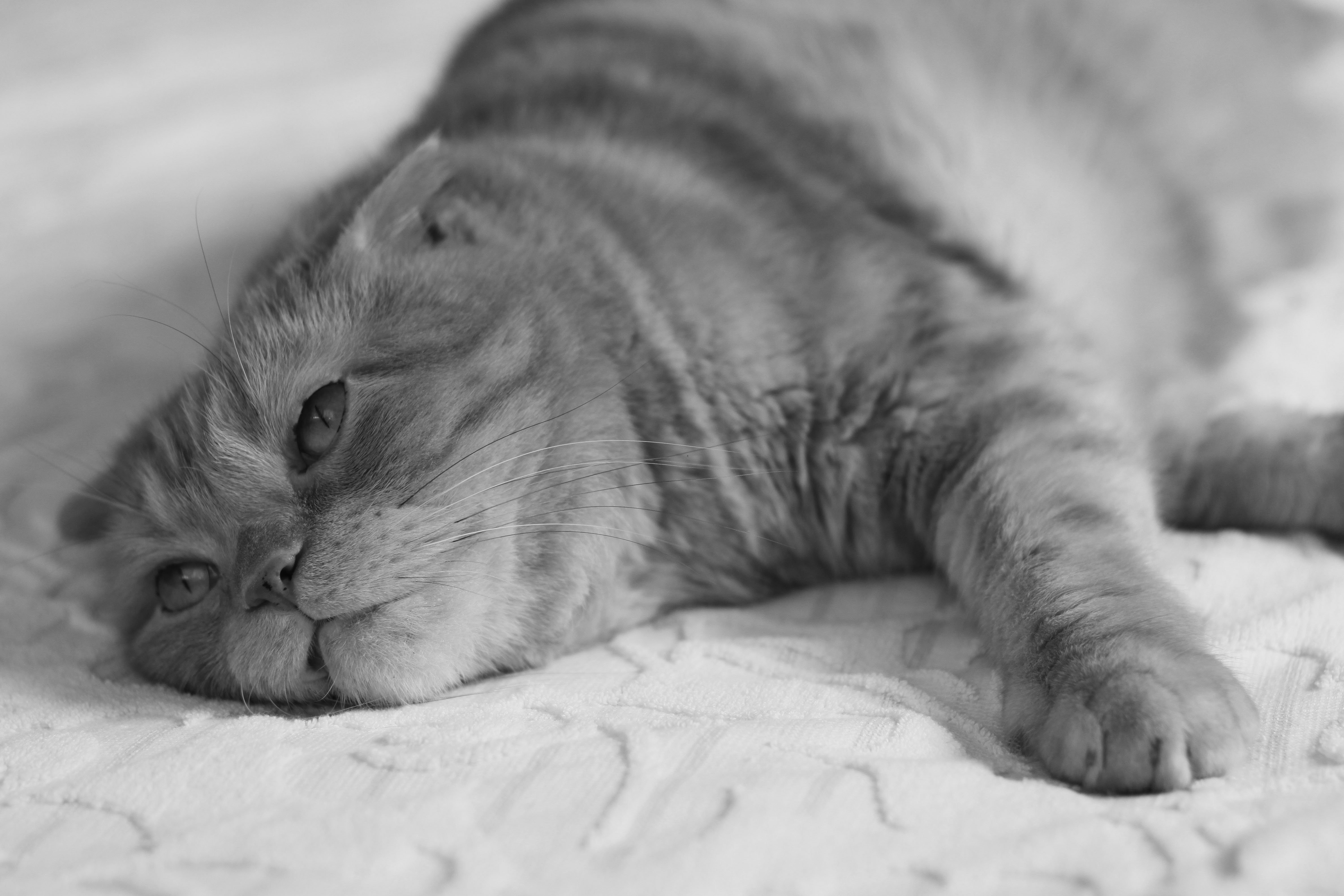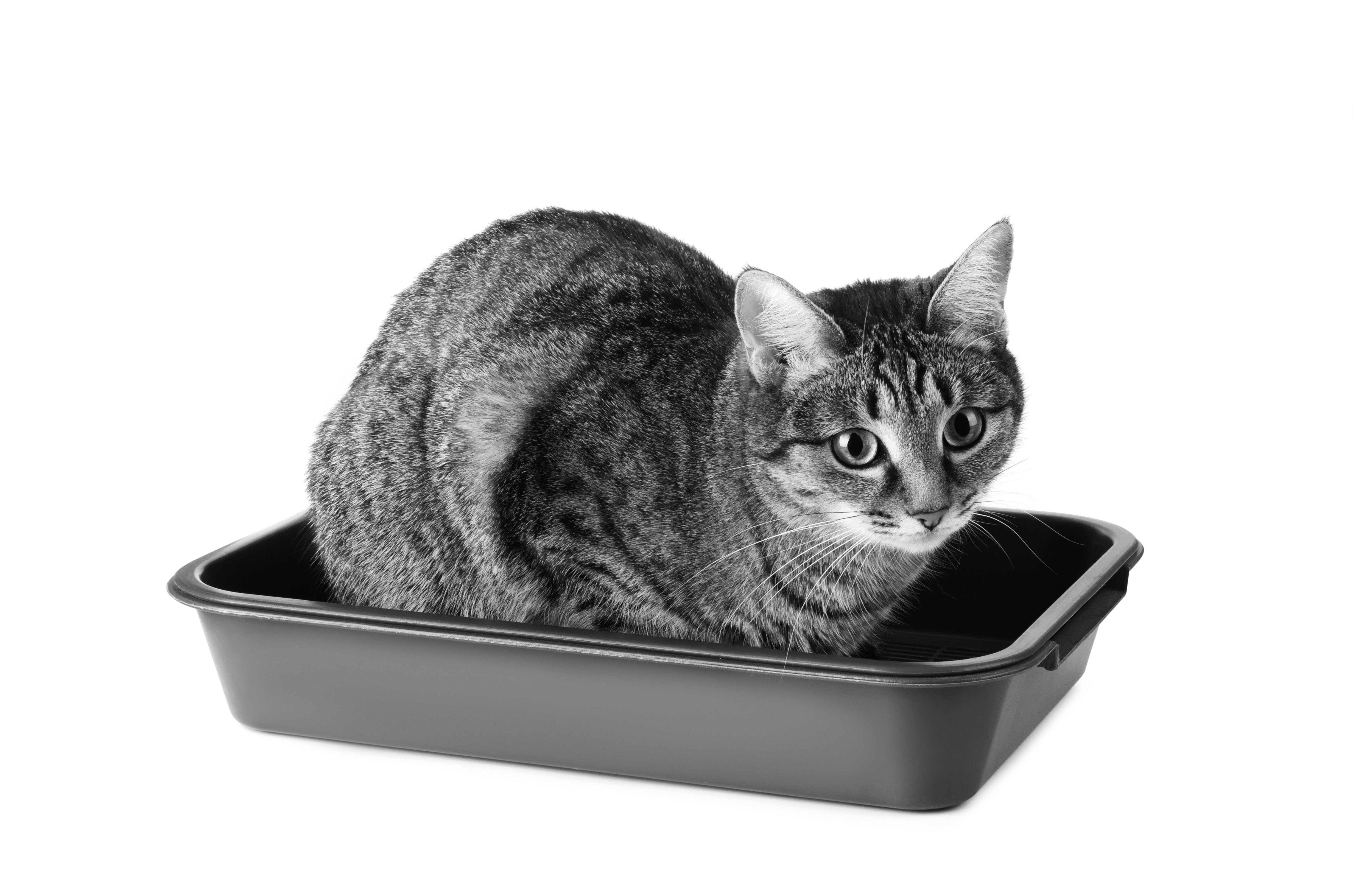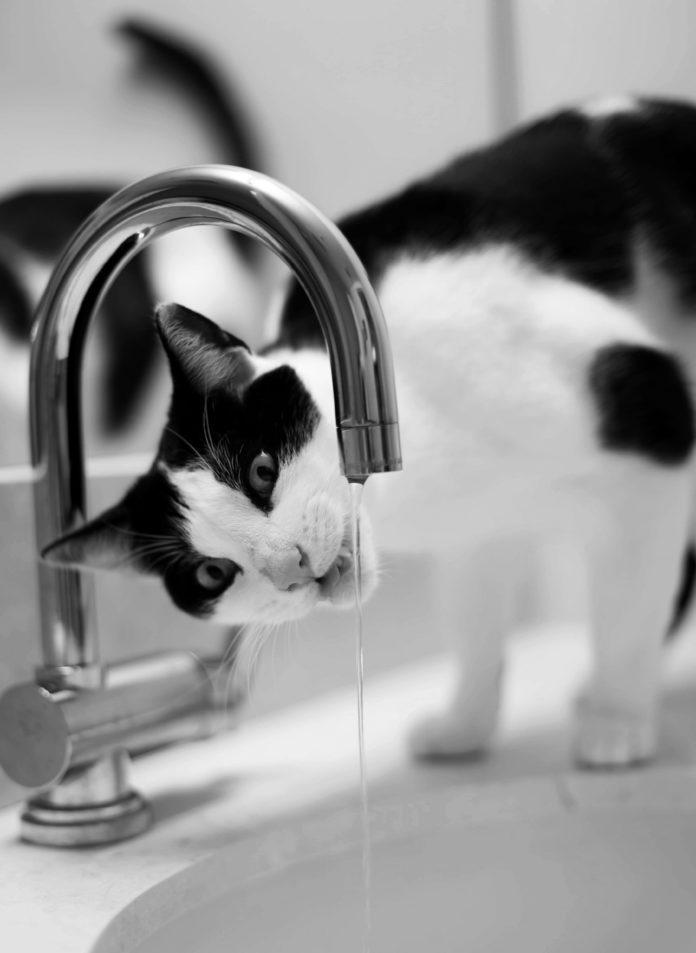Feline lower urinary tract disease, or FLUTD, is a problem that cat owners everywhere dread. Litter box “accidents,” bloody urine, or a cat straining to urinate can all concern families. In some cases, this is an emergency—in others, a painful annoyance for you and your cat.
© Abby Khoriaty | Dreamstime.com

In general, when a cat has urinary problems, it’s important to rule out any medical conditions before considering behavioral problems (to be covered in another issue). A common indication of a urinary problem is straining to urinate. You may notice your cat going to the litter box frequently, straining in the box and not really leaving any wet litter behind. Your cat may cry out when straining or you may notice a few drops of blood left behind in the litter. Sometimes families will notice that their cat is grooming more than usual in the genital area. Your cat may even be urinating outside the litter box—bathtubs and sinks are common sites that cats with bladder problems will choose. Any of these signs are reasons for a visit to your veterinarian.
The most common urinary problem, especially in cats under 10 years of age, is Feline Idiopathic Cystitis or FIC. Idiopathic means “of unknown cause” and cystitis simply refers to bladder inflammation. This can be a frustrating diagnosis for owners.
Dr. James Flanders, DVM, DACVS, Associate Professor of Small Animal Surgery at Cornell, points out it is now felt that FIC may be a multi-organ disease with the bladder being the site for the most notable symptoms. There is no specific test for FIC. Instead, your veterinarian will rule out a bacterial bladder infection, signs of cancer, and any development of crystals or stones in the bladder. Behavioral considerations will also be ruled out, although stress does seem to be a factor in FIC in many cats. A thorough history will be taken and a complete physical examination will be done.
A urinalysis is an important laboratory test for any cat with urinary problems. The urine will be evaluated for the presence of bacteria, parasites, crystals, and blood. The pH (measure of acidity) will be checked and levels of protein and toxins will be verified. Cats with FIC tend to have sterile urine, so there is often no bacterial growth detected. Normal cat urine is fairly acidic, which tends to keep crystal development to a minimum. With illness, the pH can change. Blood will often be noted in the urine of cats with FIC.
Treatment. Treatment is tricky. Symptoms often wax and wane, so it can be hard at first to tell if your changes and treatment are working. Still, there are things you can do to improve an affected cat’s well-being. These changes fit for almost any cause of feline lower urinary tract disease.
© tomopi2003 | Adobestock

Make sure your cat always has access to fresh, clean water. Some cats prefer a dripping faucet or a fountain. Provide plenty of litter boxes in easy-to-access sites. A dark corner of the basement may not be attractive to your cat! A standard recommendation is one litter box per cat plus a spare. Clean litter boxes daily—or even twice a day. Fully empty the litter boxes and scrub at least once a week. Discuss the ideal diet for your cat with your veterinarian. Many cats do best on a canned-food diet.
Minimize stress. Set a routine for your cat’s care and try to follow it. Be aware that small changes, such as a change in your work schedule, can stress your cat as much as major changes like moving to a new home or adding a new pet.
Urinary Emergency. The urinary problem that is truly an emergency is urinary blockage. This is seen almost exclusively in male cats. Male cats are the primary victims because their urethra is longer and narrower than that of female cats. You might notice your cat virtually living in his litter box and constantly straining, but not producing urine. This can be due to urinary crystals or urethral plugs—a toothpaste-like mixture of minerals, cells, and protein that effectively blocks the urethra.
If the blockage has gone on for more than a few hours, your cat will start to show signs of illness. He may vomit, act depressed, and cry out in pain. You may be able to feel a hard, tense bladder if you palpate his abdomen. Since the urine cannot be passed, toxins that normally are removed via the urine will build up in the blood. A cat straining to urinate should be considered a medical emergency. Waiting over a weekend or even overnight could be deadly for your cat.
At the veterinary hospital, your cat will be sedated and a urinary catheter will be used to remove the urethral obstruction. A urine sample will be collected to look for inciting causes, such as infection or crystals. The bladder will then be flushed to help break up and remove any debris. Intravenous or subcutaneous fluids will be given to rehydrate your cat and encourage the production of “clean” urine to aid in the flushing of toxins. A hospital stay with a catheter left in place for a day or so may be required.
The presence of urinary crystals and stones can lead to blockage in both male and female cats, along with the earlier signs of straining and possibly bloody urine. A urinalysis is critical here to accurately diagnose the type of stones and crystals found. Different types of stones form under different conditions of pH (acidity) in the urine. For example, struvite stones and crystals develop with alkaline urine. Knowing this via urinalysis, your veterinarian can help you with special diets that dissolve stones by making urine moire acidic. On the other hand, calcium-oxalate stones often require surgical removal.
Dr. Flanders emphasizes, “Once your cat is home again you can start the medical management prescribed by your veterinarian. Fresh water, fresh litter, special diet, avoiding stress, all seem to help prevent recurrence of obstruction. However, up to 40% of cats with urethral obstruction will have a recurrence within six months. Male cats who have more than two obstructions and do not seem to respond to medical management might be candidates for a special surgery that enlarges the urethra. This is certainly something to discuss with your veterinarian if your cat is a repeat offender.”
Actual bladder infections are not that common in cats. They tend to occur mainly in older cats and may be secondary to other illnesses, such as diabetes. Diagnosis is via urinalysis to look for bacteria and then a culture to determine the exact type of bacteria and what antibiotics the infection is susceptible to.
© Aperturesound | Dreamstime.com

To obtain a sterile urine sample for culture, your veterinarian may perform a cystocentesis—using a long, sterile needle to draw a sample from the bladder through the body wall. While this sounds intense, most cats simply lie or sit quietly for the sample to be drawn. Your veterinarian will start your cat on a general antibiotic while waiting for specific culture results. This is another time to try to increase your cat’s fluid intake to speed up recovery. Low-sodium broth diluted into water can encourage drinking. You can also dilute the juice from a can of tuna canned in water.
Prevention. FLUTD is common enough that many cat owners and their cats will have to deal with this at some point. You can try to avoid the problem by encouraging fluid intake by your cat. Having plenty of fresh, cool water available is critical. You may need more than one water source if you have multiple cats, and some cats prefer fountains or dripping faucets. Diet can also help, with canned foods providing more hydration than dry foods. Making a slurry for meals will entice some cats to consume more liquid. If you have multiple cats, it may be easiest to simply put all of your cats on the prescribed diet. You don’t want your sick cat snacking on the wrong foods.
Try to minimize stress as much as you can. Introduce any changes to your routine or your household as gradually as possible. If your cat is prescribed a special diet, do the change gradually over a couple of weeks.
Remember that while FLUTD can be a minor medical hassle, it can also be an emergency. Don’t hesitate to contact your veterinarian if your cat shows any of the signs of a bladder problem. While this rule of thumb applies to all cats, it is even more important for male cats who might have a urethral blockage.
SYMPTOMS OF URINARY PROBLEMS
- Blood in urine
- Frequent urinating
- Licking genital area
- Light or scanty amounts of urine
- May spend longer times in litter box
- May try to urinate out of litter box
- Pain with urination
- Straining to urinate




